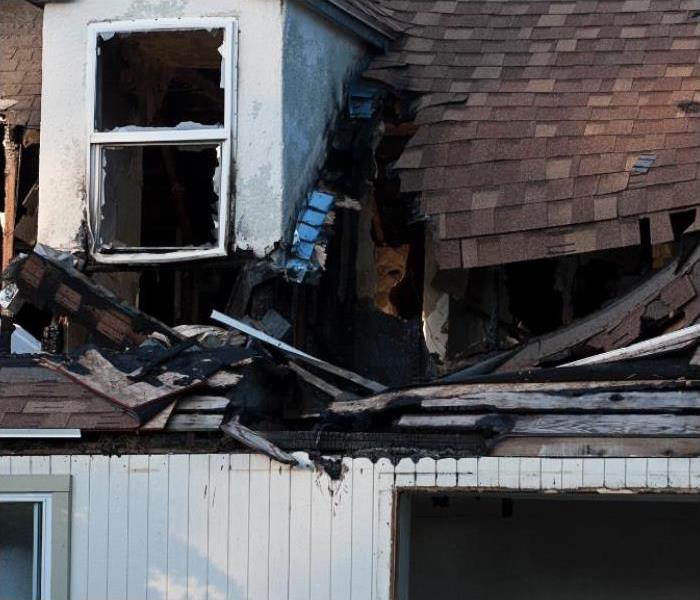Soot Cleaning Services: The #1 Best Way To Fix Smoke Damage
12/15/2021 (Permalink)
A property with fire damage will include soot particles settled into objects and surfaces around the property.
Picture this; a small grease fire just started on the stovetop, and you try to put it out with a pan lid but quickly realize that the fire is still blazing. You grab the fire extinguisher and put the fire out, but now there are black-looking spots all over your kitchen cabinets, walls, and countertops. Those black spots are soot, and they will not come off without professional soot cleaning services.
When soot particles settle on your property, they're not just an eyesore - they contain chemicals and residue that can cause significant damage over time. Soot can enter cracks and crevices, under cabinets and trim, behind walls, and more. Worst of all, if you try to wipe soot away from these areas, you might make a bigger mess of things by creating a soot-stained area.
The following blog post will outline how the professionals at SERVPRO clean up soot after a fire has occurred and how different types of fires cause different types of soot damage.
What is soot?
Soot are particles left behind after fire has occurred. Soot particles can be extremely difficult to remove from surfaces, furniture, or clothing after a fire because they are so small.
Soot can cause various problems to your property, including the destruction of property or furnishings: Soot residue is corrosive and will eat away at many surfaces over time if not cleaned off. When left untreated future damage or even destruction of property or furnishings may occur.
Soot damage cleaning depends on the type of smoke produced.
The cleaning protocols for cleaning soot will depend on the smoke produced in the fire.
Here are the four types of smoke damage:
- Wet smoke damage
- Fuel/oil residue damage
- Protein residue smoke damage
- Dry smoke damage
Wet smoke damage
A fire that produces wet smoke damage will create a sooty mess that is difficult to clean. For example, wet smoke is produced when plastics and rubbers are burned.
A property owner will easily distinguish wet smoke damage from the smell and how it looks. Wet smoke fires will leave thick soot, which is difficult to clean.
Fuel/oil residue smoke damage
A fire that produces fuel/oil residue smoke damage will create a sooty mess that requires time and patience to clean. Fuel soot is easier to clean than wet smoke soot but will require extra effort.
Fuel/oil residue smoke can occur when a home furnace malfunctions and causes puff-back. The sooty residue left behind will be dense and sticky with a foul odor.
Protein residue smoke damage
Grease fires often cause protein residue smoke damage. The soot caused by protein residue smoke will appear smooth or greasy.
These soot particles are the most difficult to see but can be distinguished by a pungent odor. Protein residue smoke damage is fairly easy to clean and will usually come off with a soot sponge.
Dry smoke damage
A fast-burning, high-temperature fire started by paper or wood will produce dry smoke damage. Restoration professionals find dry smoke damage the easiest type of smoke residue to clean.
It is essential to call fire restoration professionals for dry smoke damage. Although it is easy to clean off of walls and other surfaces, dry smoke damage may leave a lingering smell even after the space looks like it never had fire damage.
SERVPRO soot cleaning services
When soot damage is discovered, the first step is to contact a professional fire restoration company. SERVPRO of South Cobb offers soot cleaning services with trained technicians experienced in dealing with all types of fire restoration scenarios.
The soot cleaning process begins with an initial assessment of the damage. Our technicians will consider the type of smoke damage, the extent of soot residue, and any other damages that the fire has caused.
Once the initial assessment has been completed, our technicians will begin the soot cleaning process. This process involves using specialized equipment and techniques to remove soot from all surfaces.
The soot cleaning process can be a time-consuming, challenging endeavor, but our team is up for the task. We will work diligently to restore your property to its pre-fire condition.
If you have suffered soot damage, please contact us today. We are available 24/7, 365 days a year, to help!

 24/7 Emergency Service
24/7 Emergency Service
